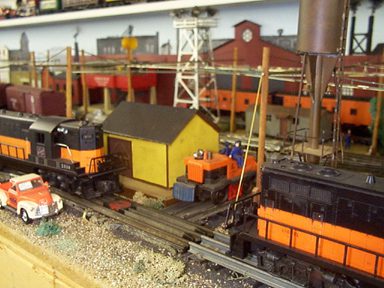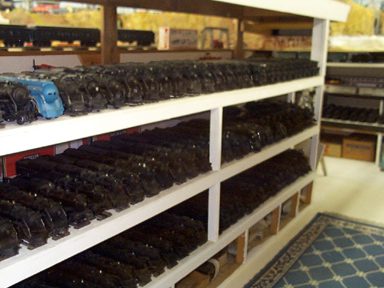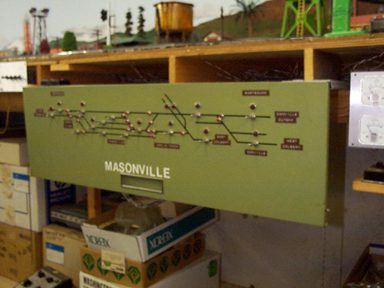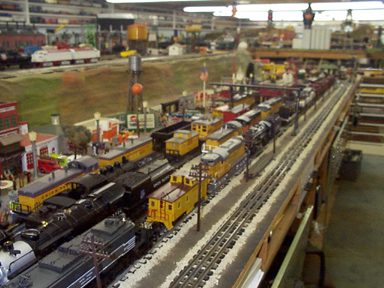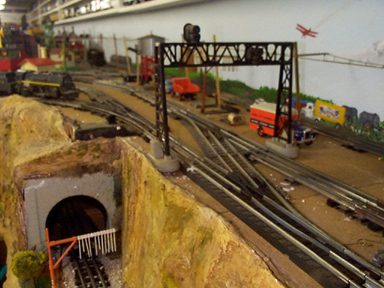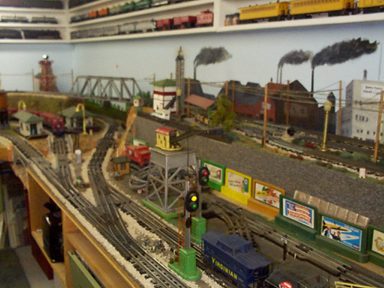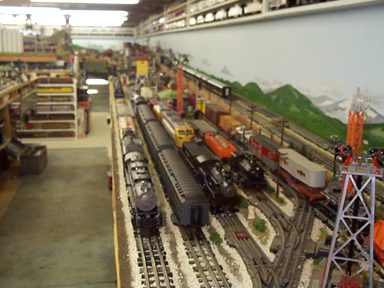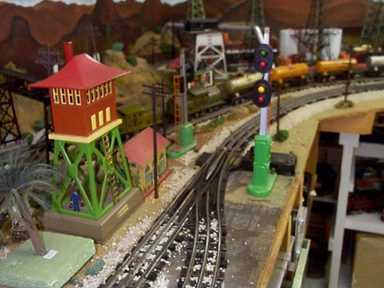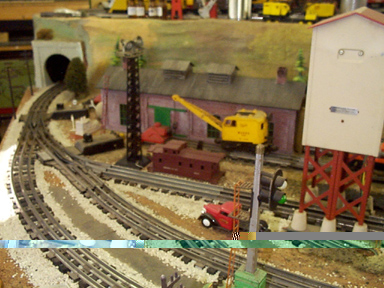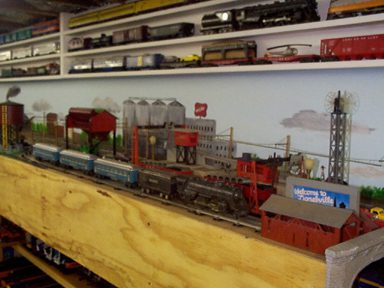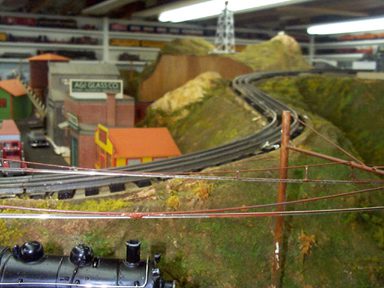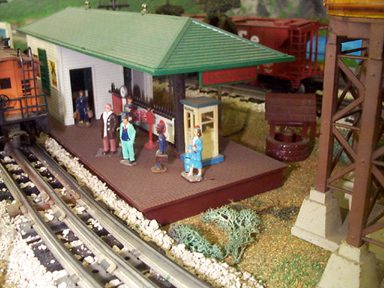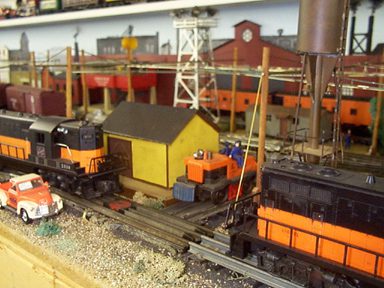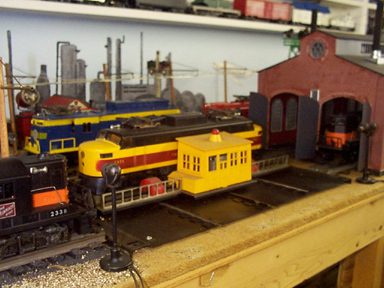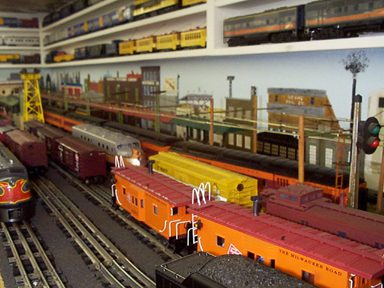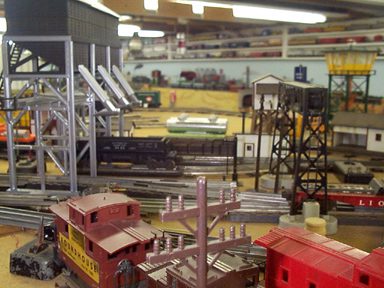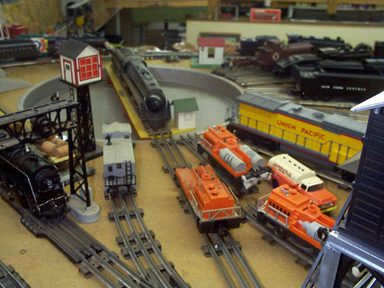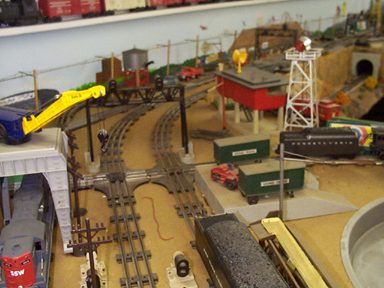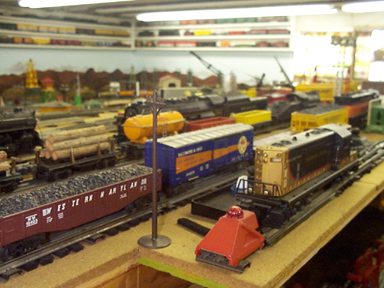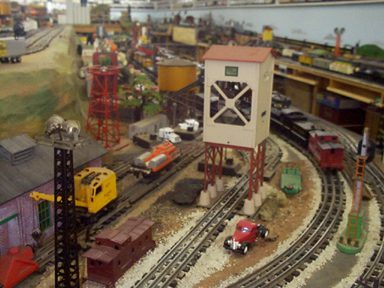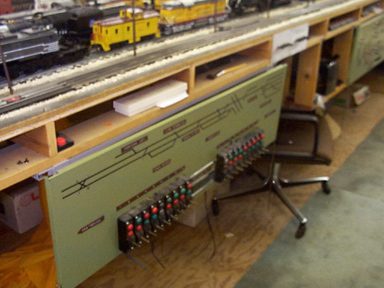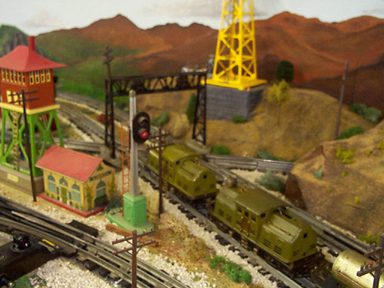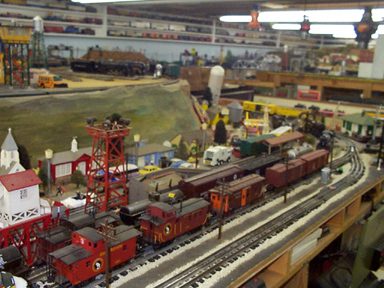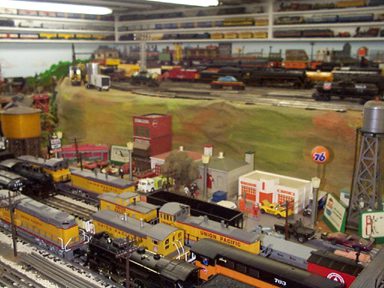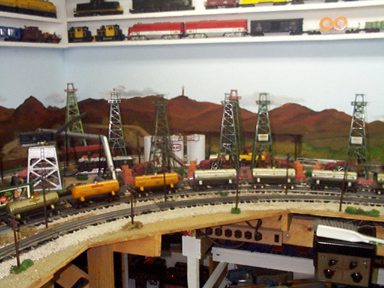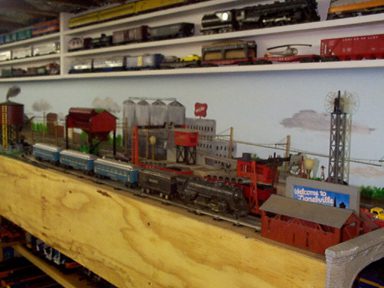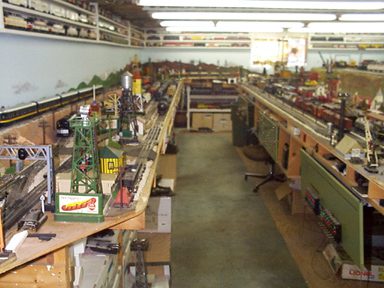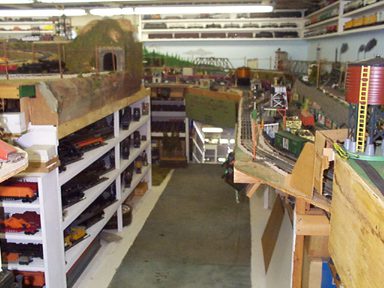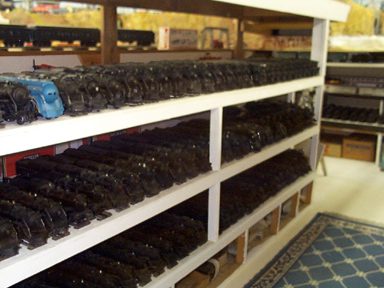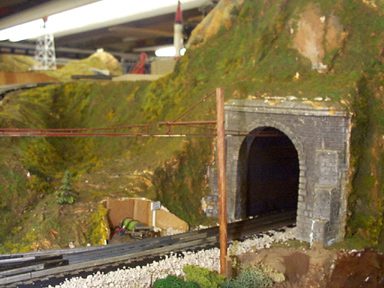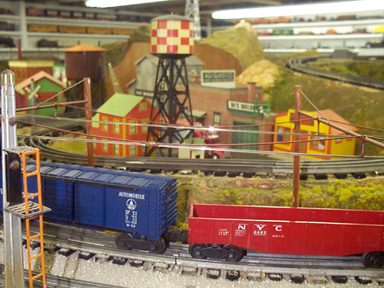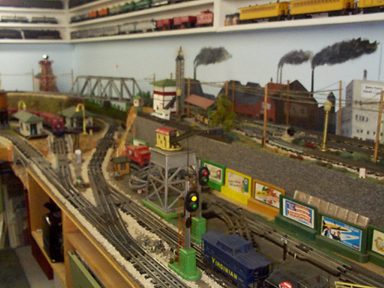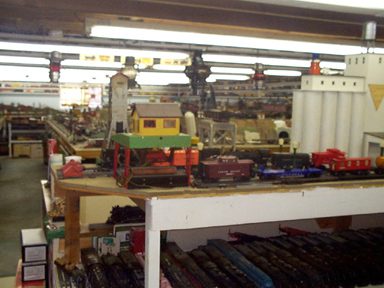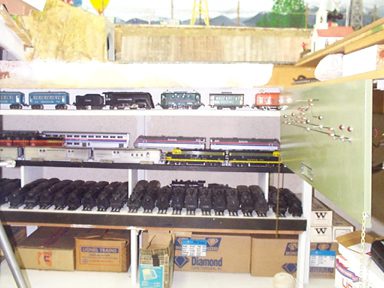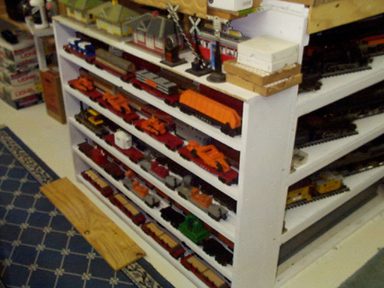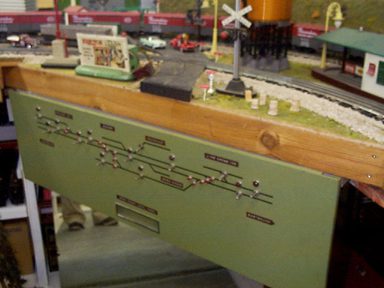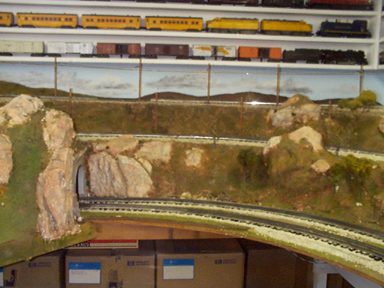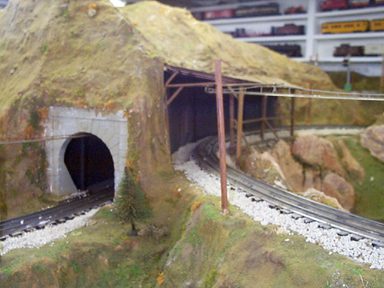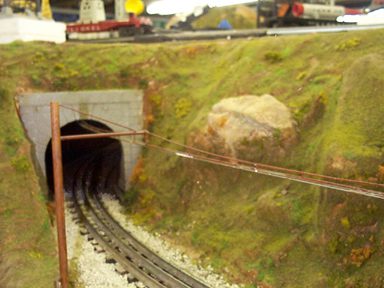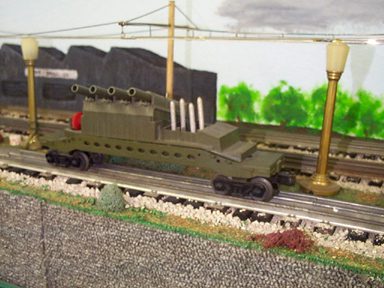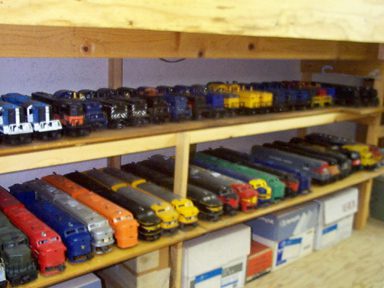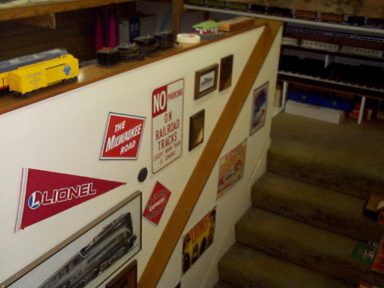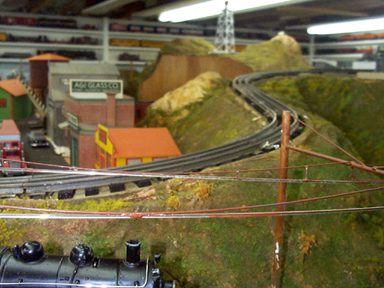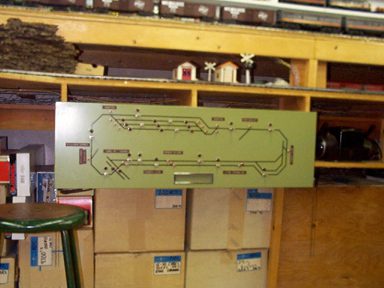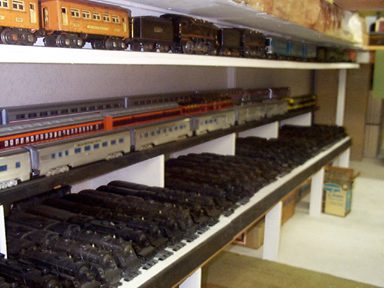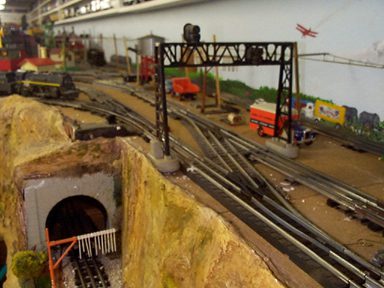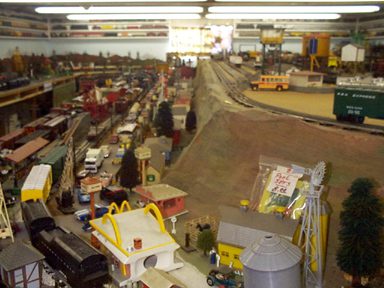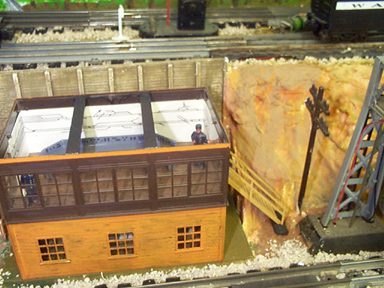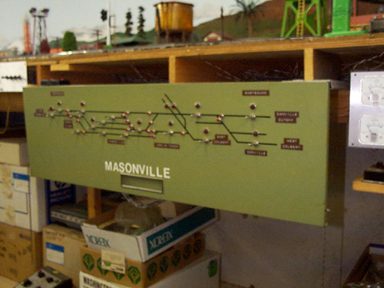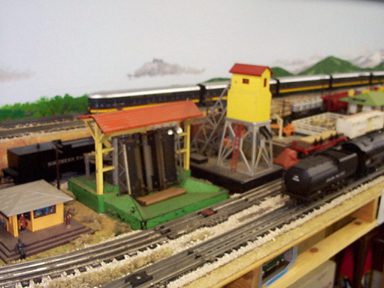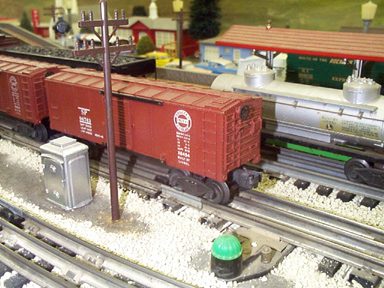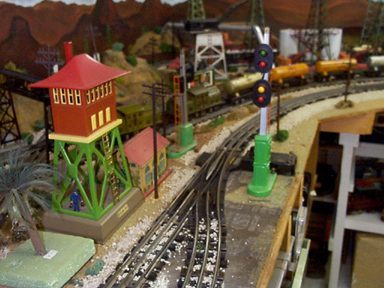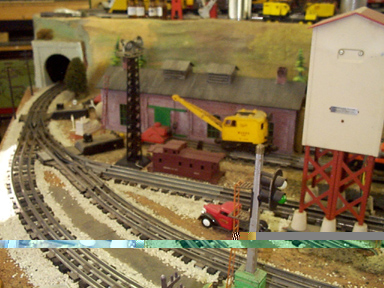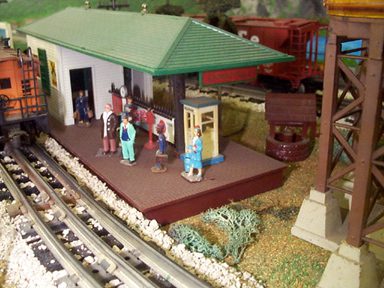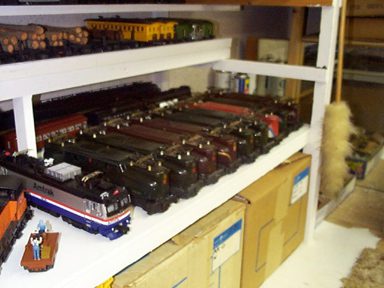Lionel Lines (The Largest Lionel Railroad on my Block)
by Mike Stella
It seems that almost every toy train layout article, in any magazine or club publication, starts out with the progressive litany of how one got started in the hobby (Dad bought me a train when I was only three…), followed by a waning interest (Girls came along and then there was that 1964 Mustang…), then how they got back into the hobby (I was cleaning out the old folks attic when…), finally coming full-circle to how they arrived at their present state of operating and/or collecting Lionel trains. Let’s skip all that stuff for now; from my first Lionel train set in 1950, through the switch to S gauge, then into HO gauge.
I bought a Lionel #2037 and some track at a California “swap meet” in 1970 and, shortly thereafter, began a quest that continues to this day. That single train became ten, then a hundred, past a thousand, and now has passed ten thousand. But numbers of trains, and the reason for them, belong to the collecting side of my hobby. It is the Operating side that I wish to write about today.
I always considered myself an operator first and a collector second. The photographs I submitted with this article to share with all of you are of my Operating Lionel Railroad (The Largest Lionel Railroad on my Block) and not of my collection. What follows is the how and why of what you might see in them.
The desire to own a large piece of “plywood” real estate, to create that “dream railroad”, only continues to grow as one begins buying more and more trains and accessories that will look great upon it. I started buying trains in late 1970 and, by the time I ended my duty with the United States Navy in 1975, I had so many that a private storage facility was needed to hold them. Apartments are great for a while, but you can’t build a Lionel empire of any size in such a small space. While looking for a house in southern California, my wife concentrated on bedrooms, closets, a kitchen, etc. I looked at the garage to be sure it could be used for a layout and expanded when necessary.
We moved into our house in 1978. It took about three weeks to transform the two-car garage into a 16×20 foot layout where one ducked under the table to come up in the middle of the room surrounded by four loops of 0-72 track, a small yard, a few small mountains, lots of accessories, and a control panel that held five ZW transformers, along with dozens of Lionel buttons, switches and controls of all sorts. The walls were covered with shelves and, even back then, it was the largest Lionel layout on my block. It was a nice setup and it was the kind of layout that most people seemed to build.
The layout consisted of concentric loops of track with the ability to run five trains at the same time, a separate trolley line, and a section of track where a #50 Gang Car could run back and forth. If your eyes had trouble keeping up with all the action, your ears had a tougher time putting up with all the noise. After about fifteen minutes of “running” trains, one was ready for something else. As the collection kept growing and more boxes started piling up it was time to plan the “railroad.” After all, it was over 40 feet to the fence behind the garage and who needs a back yard anyway?
My city’s building department was very cooperative when it came to expanding my 20×20 foot garage into a 20×56 foot “Barn.” There was one small problem, however, of a 25 foot setback requirement for a two story structure.
“How tall can a ‘single’ story building be?” I asked.
I was told 18 feet high. So, what I ended up with was a 20×56 foot “loft” over my garage instead of a second story. As long as you are not over 6-1/2 feet tall, you shouldn’t hit your head on the rafters. Once construction was completed, I had an empty room that measured 20×56 feet with no supporting posts to get in the way and a stairwell that pops up towards the middle so the entire parameter is free to build the train table. This is the stuff that Lionel dreams are made of. But, what kind of layout should I construct?
I gave consideration to duplicating the 1949 Lionel showroom layout, but my previous experience with multiple concentric loops of track made me rethink this option. I wanted a track plan that was interesting, that would rarely be boring, and that would allow multiple “engineers” to run an almost unlimited number of trains. Most of all, I wanted a railroad that would be operated much like a real railroad operates. While I admire those Lionel operators that can walk into their train room, flip a switch, have 69 trains take off at the same time without ever crashing, and never touch any controls, I knew that wasn’t for me. Enter my relationship with Frank Ellison.
I started reading about Frank Ellison and his model railroad in the mid-1960s when I was building HO gauge layouts. His “Delta Lines” has to rank among the finest model railroads ever built and his “operation” of trains has never been equaled. I modeled my Lionel Lines (The Largest Lionel Railroad on my Block) after Delta Lines and incorporated many of the same features in my track plan but, more importantly, I wired my railroad exactly they way Frank Ellison did. I utilize “Engineer Control” that Frank often wrote about. While I have always maintained that “I” can only run one train at a time, Frank would be proud that my railroad can handle 22 trains being operated independently by 22 Engineers on a SINGLE TRACK MAIN LINE with ample passing sidings, Division Yard, and terminal yards. My Lionel railroad (The Largest Lionel Railroad on my Block) is point-to-point and “operating” is what it was built to do.
My first Lionel layout taught me how boring a number of concentric loops of track could be as well as the undesirability of “ducking” under the table to get inside the control area. The “railroad” would have no “duckunders” and wide aisles. A point-to-point track plan was developed that was modeled after the famed Delta Lines. It includes small, yet functional, yards at each terminal, two Divisions joined by a large Division Yard where all trains must stop for a crew change, four smaller towns (two per Division) where passing tracks, industrial sidings, wayside stations, and local control towers make for wonderful operating scenarios. An “Electrified” subdivision is located in the mountains (over the Summit) where “juice-jacks” rule and “steam” is forbidden to tread. Locations are provided for every Lionel postwar operating accessory (the collector in me does occasionally win out) with only one exception.
ZWs have ruled as power to date, but I intend to supplement power on the main with a couple of prewar “Zs” as the 25 VAC they provide is needed on multi-motored locomotives hauling heavy loads. Every town and yard has a dedicated “local” control panel and at least one ZW. LWs are also used as they are the only Lionel single transformer that is rated at 20 VAC, matching the ZWs. All transformers have their secondarys wired in parallel. Today, there are over 2500 watts of power to the track. Accessories and lights have their own power source, often DC, to extend bulb life.
Currently, there are about 125 track switches and almost 100 UCS/RCS remote sections. There are enough dedicated “cabs” and blocks to allow 18 engineers to operate trains and future plans call for 4 additional mainline “cabs” to be installed for a total possibility of 22 simultaneously independently operated trains. There are NO automatic controls, safety blocks, non-derailing switches, or similar features to prevent collisions, derailments, or wrecks. The design of “Engineer Control” provides indicator lamps to warn of occupied blocks. Many #153 Block signals are utilized to indicate switch positions. Before 22 trains are, in fact, running, a phone system must be installed (future project) whereby all engineers will be in constant radio contact with their respective Dispatcher.
This concludes the physical description of my Lionel Railroad; I refer to it as a railroad and never a layout. Now, let’s take a voyage of discovery around the “main.”
A trip over the entire main line of Lionel Lines (The Largest Lionel Railroad on my Block) begins when a locomotive leaves the Roundhouse (yet to be built). It backs up to couple onto a train that has been assembled on the departure track by a yard goat shuffling cars from the four classification tracks that are part of this yard #1. When a clear board is given, our train will depart the yard area and head out onto the double track main taking a crossover to get to the correct right hand running track. A gentle curve leads out of the freight yard and, soon, the trackage from the passenger terminal joins the main. “Green lights” from the signal bridge mean we can highball down Happy Valley (so called because of the RR Tracks that run its entire length) before heading into a long spiral tunnel that emerges at Fortuna Junction.
We continue through tunnel #2 and arrive at Greg Manor (both Fortuna Junction and Greg Manor are named for friends that helped construct much of the benchwork). Greg Manor is a town laid out much like a town on Delta Lines where a long passing siding, and mainline crossovers, allow for three trains to pass each other. The eastbound and westbound mains split apart here for a short distance then rejoin at Jim’s Crossing just around the next curve. Our double track mainline continues towards Masonville.
Masonville is reached after ducking through tunnel #3 and crossing the gorge where an old caboose wreck can be seen. There is plenty of industry located here with most of it between the, again, split east and west mains. A small yard helps the local switch crew do the chores. Masonville, named for another worker, is where the mainline becomes single tracked and also where a branch line cuts off through the town of WisE.
Leslie Tower (yep, another friend) watches continually over this area as our single track main crosses, at grade, the dual tracks of another line, plunges into a deep cut, and disappears around another bend. We’re skirting the Hess Oil Fields and approaching Danville Junction. The track splits but the mainline is always on the right leg. That left leg is another branch line that passes through Danville, burrows into the hillside and comes back to join the main back over at Fortuna Junction. It creates a continuous loop that allows a train to forever circle the room, if desired. Our main line also ducks into the same hillside but emerges to enter the Division Yard where one track becomes five. Locomotives are serviced, crews are changed, and this has always been a great place to take a break.
New locomotive, new crew, and we head out of the Division Yard rounding the curve past the small locomotive servicing facility into the shortest tunnel to emerge on the south side of Railroad Canyon. Entering into a horseshoe tunnel and the end of the canyon, we get to the opposite side running in the opposite direction. Rounding another curve, we reach the switch that could take us back to Masonville (a reverse loop) via EisW (WisE and EisW are actually the same place located halfway into the reverse loop branch line and are so named because “E”ast becomes “W”est when a train passes through EisW and “W”est becomes “E”ast if you pass through in the opposite direction through WisE). However, we’re not taking that cutoff today.
We hit a stretch of double track main that starts a long, gentle climb into the foothills. As we approach the hamlet of St. Michael’s, we become aware of a glistening copper wire above our heads as we enter the “Electrified subdivision.” There’s time to enjoy the beauty of this foothill community as our steam locomotive is cut off and a silent running “juice-jack” couples on to the front of our train.
In a short time, we are off again crossing several long trestles before hitting the edge of the mountains. Up, up, up we climb passing through a snowshed and crossing over our own track as we gain altitude and, finally, arrive at the summit switch. There’s a long passing siding here at Summit, along with a turning wye from the days of steam, and a branch line run by the government that leads to a place known as Space Mountain. The town folk say that flatcars carrying Rockets or Missiles are moved under the shadow of night up that branch. Summit tunnel looms ahead and soon we are heading downgrade seeing the light of day only briefly as we plow into another tunnel.
When we finally see light again, it is a straight run through the long valley, past the yard limit of terminal two, and into the arrival track adjacent to the three-track classification yard. Our Electric cuts off and takes the run-around track to reach the electric engine facility via a transfer table. A switcher appears to unhook our caboose and move it to the caboose track. It then returns to “break up” our train. It’s time to head for the passenger terminal and see about getting a ticket on the next train back home.

